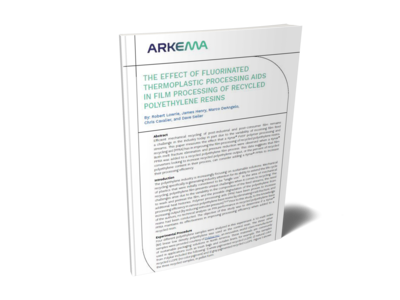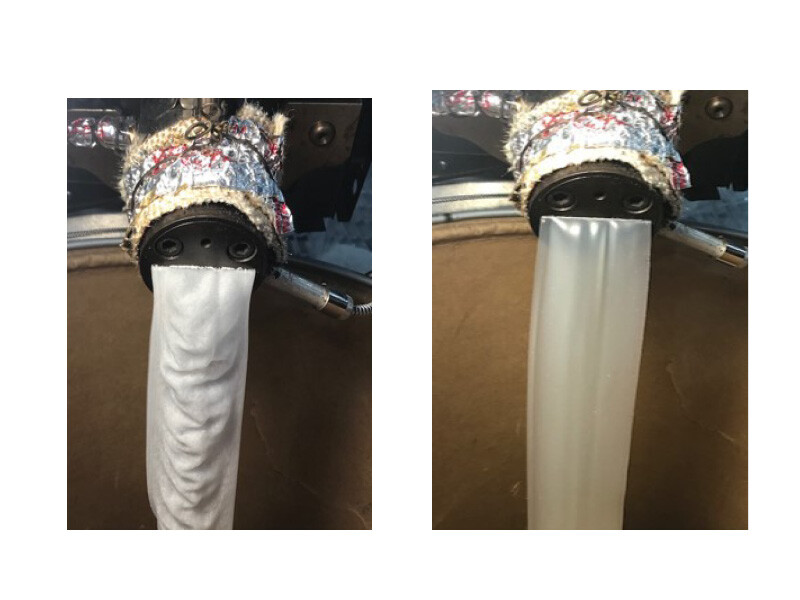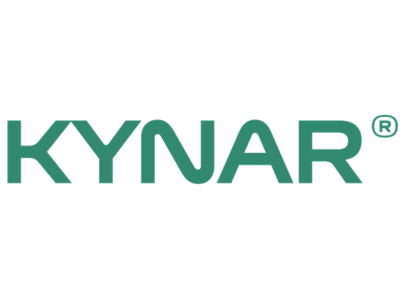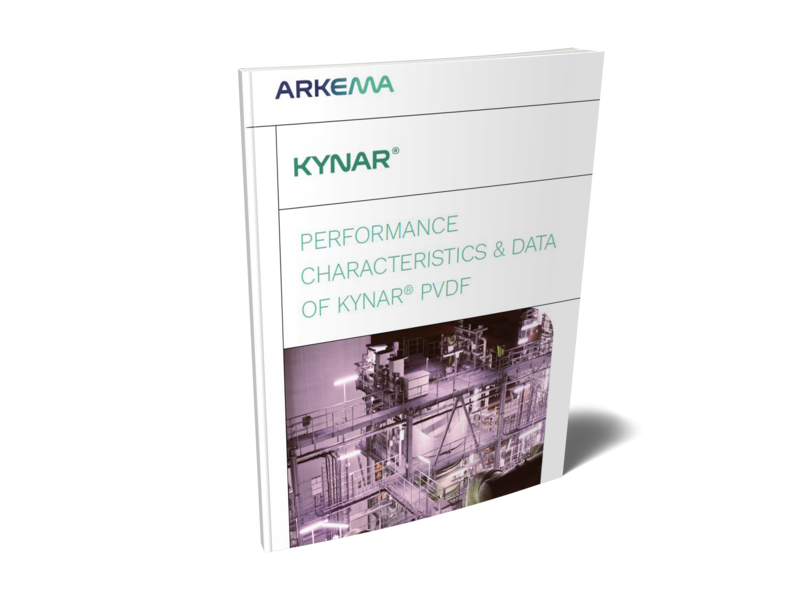Feb 16, 2023 - 3 mins
How to improve the LLDPE mechanical recycling process?
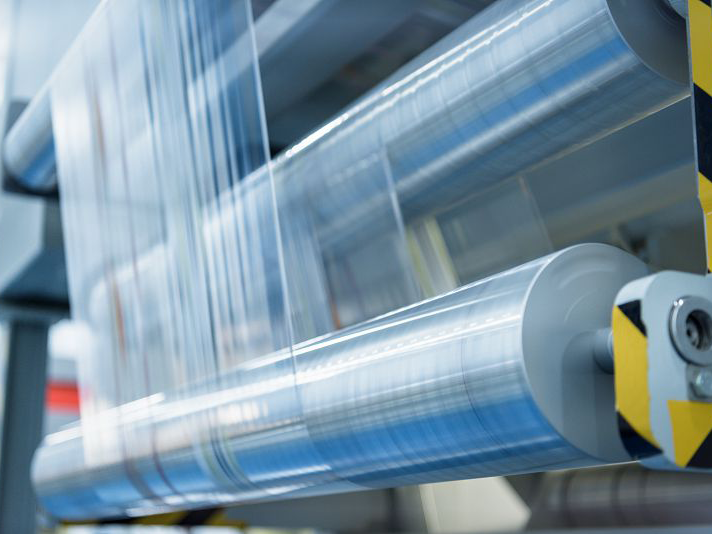
Melt fracture or shark skin is the phenomenon of roughness in the extrudate (material in the die in the extrusion process) often caused by excessive shear stress on the molten resin. A polymer processing aid is a material that is added to a polymer to improve the processing and handling of the polymer, as well as improve the surface appearance of the final product. The aid is added to a polymer either during polymerization step or during processing step.
What is LLDPE?
Low-density polyethylene (LDPE) is a type of plastic that is commonly used in a variety of applications, including packaging materials, plastic bags, and certain types of food packaging. It is known for its flexibility and durability. LLDPE (linear low-density polyethylene) is a variant of LDPE that is characterized by its linear molecular structure, which gives it improved strength and stiffness compared to regular LDPE. LLDPE is also highly resistant to chemicals and moisture, making it suitable for a range of applications in industries such as agriculture, packaging, and construction.Recycling of the LLDPE and its challenges
There are several ways to recycle LLDPE, including mechanical recycling, where the material is melted down and turned into new products, and chemical recycling, where the material is broken down into its constituent chemical building blocks which are then used to produce new polymer products. Some of the typical recycled LLDPE applications are gaylord liners and industrial garbage bags.However, the recycling rate for LLDPE is generally lower than that of other plastics, due in part to the fact that it is often originally used in a blend with other types of plastic, which can make recycling difficult. LLDPE for recycling can come from a variety of sources, including packaging materials, agricultural film, and industrial products.
A lot of LLDPE is made into a flexible film which is another other reason for the low recycling rate. Recycling flexible film is even more challenging because it tends to get caught in the shredding/recycling equipment, or wrapped around the equipment, and this may lead to lots of downtime, and inefficient processing.
The processing of LLDPE in flexible or other forms can also be challenging due to its limited thermal stability. LLDPE melting point is high but the issue is related to preserving the physical properties through the recycling process. When LLDPE is exposed to a heat cycle during the recycling process, it can degrade the physical properties and limit the potential uses of the recycled material.
What is a polymer processing aid?
A polymer processing aid is a material that is added to a polymer to improve the processing and handling of the polymer, as well as improve the surface appearance of the final product. The aid is added to a polymer either during polymerization step or during processing step. Polymer processing aids are commonly added during the manufacture of a wide range of plastic finished products, including films, pipes, sheets, cable jackets, monofilaments, and profiles. They are typically incorporated in very small amounts, and are usually added to the polymer in a dry or liquid form.These processing aids can help to reduce the apparent melt viscosity of the polymer, allowing it to flow more easily and be molded more effectively. They also improve the surface finish and dimensional stability of the finished product, and reduce die build-up during the extrusion. In this article we will focus on a specific polymer processing aid that helps to eliminate the melt fracture during the film processing.
Melt fracture or shark skin is the phenomenon of roughness in the extrudate (material in the die in the extrusion process) often caused by excessive shear stress on the molten resin. Melt fracture can be observed as visual imperfections of the extrudate in irregular and helical forms. Kynar® PVDF polymer processing and recycling aids (PPRA) already have a proven legacy as an efficient solution to reduce the shark skin in virgin resin processing. Kynar® PVDF is a fluoropolymer that helps to reduce melt fracture and die buildup thus creating a smooth surface.
Are Kynar® PVDF polymer processing and recycling aids efficient in recycled LLDPE processing?
As seen above, LLDPE is often made into a flexible film and its processing with recycled polyethylene is very challenging. Higher recycled content may imply more shear stress which results in the shark skin phenomenon of the molten resin. Given the massive quantity of LLDPE that can be recycled, the question is: Can Kynar® PVDF polymer processing and recycling aids (PPRA) be a solution to improve the LLDPE mechanical recycling process? The answer is yes.To measure the effect of Kynar® PVDF PPRA, our R&D team has experimented with three different recycled polyethylene resins. The purpose of this experiment was to determine if Kynar® PVDF PPRA maintains its efficiency in improving processing when added to a recycled resin.
In the experiment, we used A 1.0 melt index (MI) linear low-density polyethylene as the control resin. The test samples included the following recycled resins:
1) white pigmented recycled LLDPE
2) natural color recycled LLDPE (no color pigment)
3) gray-pigmented recycled LLDPE
The experiment to test Kynar® PVDF PPRA efficiency in recycled resin processing
Our team recorded the melt pressure throughout the experiment and took pictures of the film extrudate to measure melt fracture elimination over time. Once each sample reached a steady state, we added Kynar® PVDF PPRA masterbatch (using an LLDPE carrier resin) to the process. A timer was started once the PPRA was added, and the evolution of the film surface over time was captured by a camera at 5-minute intervals.The addition of a Kynar® PVDF PPRA increased the processing efficiency of three different recycled polyethylene samples. Processing efficiency was measured by the elimination of melt fracture, and the reduction in extruder die pressure. These conclusions suggest that film converters wishing to run more recycled polyethylene content may have more processing options available to them than initially thought. Kynar® PVDF PPRA can help increase the total output for a film converter so they can run more material on the same equipment without the need to invest in additional processing equipment.
How can we improve the LLDPE recycling process with Kynar® PPRA?
The use of a Kynar® PVDF PPRA can potentially increase the performance of the recycled LLDPE, allowing it to be used in a wider range of applications.It is also possible that the addition of a PPRA could increase the output of recycled LLDPE during processing, potentially making the recycling process more efficient and cost-effective. In addition, the use of a PPRA could potentially allow for the use of a higher ratio of recycled LLDPE in blends with other polymers, potentially increasing the overall sustainability of the finished product by helping to promote a more circular economy.
The use of Kynar® PVDF PPRA greatly improves the efficiency of the recycling process, enabling the processor to use less energy and to produce lower levels of scrap, thereby lowering the carbon footprint of the process. It also enables the processor of recycled films to down-gauge their films, thus producing less plastic and consuming fewer resources.
If you are interested in the details of this study, download our white paper
WHITE PAPER KYNAR® PVDF PPRA FOR FILM PROCESSING OF RECYCLED POLYETHYLENE RESINS
See also
Back to all articles- White paper
Extrusion 3D printing: a comparison of flexible filaments
Jul 29, 2022
- Case Study
Case Study: Non-intrusive Concrete Fastener with 3D-Printed PA11 Deformation Layer
Dec 22, 2022
- Case Study
3D printed and tailor-made: orthopedic insoles made with advanced bio-circular polyamide 11
Mar 17, 2022

